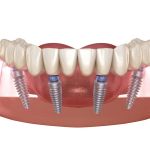Best Way to Clean Teeth with Braces
Having braces can be a transformative experience, but maintaining proper oral hygiene becomes even more crucial during the process. Braces create more crevices for food particles and plaque to accumulate, making it harder to clean teeth effectively. If you are wearing braces or are considering getting them, understanding the best ways to clean your teeth is essential. This article will provide you with practical tips on cleaning your teeth with braces, ensuring that your oral hygiene remains top-notch throughout your treatment.
1. Why Proper Oral Hygiene is Crucial for Braces Wearers
Braces are designed to straighten your teeth over time, but the added components—brackets, wires, and rubber bands—create an environment where food and plaque can easily get trapped. If left unchecked, this can lead to dental issues such as cavities, gum disease, and bad breath. Additionally, improper cleaning during the braces period can cause discoloration of teeth, which is something no one wants to deal with once the braces are removed.
1.1 The Impact of Plaque and Food Particles on Braces
When food particles and plaque build up around the brackets and wires, they can lead to the formation of cavities or other dental complications. The bacteria that feed on plaque release acids that can erode tooth enamel and irritate the gums. If left untreated, plaque can harden into tartar, which can only be removed by a dentist or dental hygienist. This is why it’s essential to adopt a cleaning routine that ensures food and plaque are thoroughly removed from all areas of your braces.
2. Best Tools for Cleaning Teeth with Braces
When you have braces, you need more than just a regular toothbrush. Specialized tools and products can make a big difference in your cleaning routine. Here are some of the best tools to use:
2.1 Braces-Friendly Toothbrush
A toothbrush with soft bristles is the first essential tool in your oral hygiene routine. You should use a small-headed toothbrush designed specifically for braces to reach areas around the brackets and wires. It’s also crucial to brush at a 45-degree angle to ensure that the bristles can clean the gum line and all parts of your teeth properly. Electric toothbrushes are also great, as they can provide a more consistent brushing action, but manual brushes are effective as long as they are used properly.
2.2 Interdental Brushes
Interdental brushes are small, cone-shaped brushes that are designed to clean between the teeth and around the braces. These brushes are great for removing food particles and plaque that are trapped between your teeth or under the wires. Using an interdental brush regularly can help you clean areas that are difficult to reach with a regular toothbrush.
2.3 Floss Threaders
Flossing is essential to remove debris from between your teeth, but it can be tricky with braces. A floss threader is a tool that allows you to thread dental floss behind the wire, enabling you to floss the areas that the toothbrush cannot reach. Using floss threaders can significantly reduce the risk of gum disease and cavities around your brackets.
2.4 Water Flossers
Water flossers are devices that shoot a thin stream of water between your teeth and around your braces. They help dislodge food particles and plaque, making them an excellent addition to your oral care routine. Water flossers are particularly helpful for people with braces as they can reach areas that traditional floss may struggle with. They’re also gentler on the gums than string floss, which can be important for sensitive gums.
3. The Proper Brushing Technique for Braces
Brushing your teeth with braces requires a slightly different technique than brushing without them. Here’s how you can effectively clean your teeth:
3.1 Brushing the Brackets
When brushing, start by placing the toothbrush at a 45-degree angle to the gum line. Gently move the brush in small circular motions to clean the teeth around the brackets. Focus on cleaning the brackets themselves as well as the areas where the wire attaches to the teeth. These areas are prone to plaque buildup, so be thorough.
3.2 Cleaning the Wire
The wire of your braces is another area where food particles and plaque can accumulate. Using a small, soft-bristled brush, gently clean the top and bottom of the wire, making sure to remove any buildup that might be present. Be careful not to apply too much pressure, as this can damage the wire or brackets.
3.3 Brushing the Teeth Properly
Once you’ve cleaned the brackets and wire, focus on brushing the surfaces of your teeth. Make sure to clean the front, back, and chewing surfaces of each tooth. A common mistake people make is focusing only on the front of the teeth, neglecting the back and the chewing surfaces. Be thorough in all areas of your mouth for the best results.
4. The Importance of Flossing with Braces
Flossing is crucial for anyone with braces, as food particles and plaque can easily accumulate between your teeth. Regular flossing helps prevent cavities and gum disease. While it can be challenging with braces, there are tools that make it easier.
4.1 Using Floss Threaders
As mentioned earlier, floss threaders are an essential tool for anyone with braces. Using a threader, you can easily get dental floss under the wire and between your teeth. Gently slide the floss up and down between each tooth and along the gum line. If you're unsure about how to use a floss threader, your dentist can show you the proper technique during a visit.
4.2 Alternative to Traditional Floss: Water Flossing
For those who find flossing with threaders challenging, a water flosser can be an excellent alternative. A water flosser uses a jet of water to clean between the teeth and around the brackets. It’s a quick and effective way to remove food particles and plaque from places that may be difficult to reach with traditional floss.
5. Regular Dental Checkups and Maintenance
In addition to daily brushing and flossing, regular dental visits are essential when you have braces. Your dentist or orthodontist can check your progress and ensure that your braces are functioning correctly. They can also provide professional cleaning to remove plaque buildup that might have been missed during at-home care.
5.1 The Importance of Professional Cleaning
While home care is essential, professional cleanings are a must when wearing braces. Your dentist will use specialized tools to remove plaque and tartar that can accumulate around your braces. This helps to maintain healthy teeth and gums during your treatment.
Conclusion: Maintaining Oral Health with Braces
Cleaning your teeth with braces may take more time and effort than brushing without them, but it’s essential to maintain good oral hygiene to prevent complications. With the right tools, techniques, and regular dental visits, you can ensure that your teeth stay healthy and clean throughout your treatment. By following these tips, you can enjoy your braces experience with a confident, bright smile!
OLD Keywords-8:SEO Title: Best Way to Clean Teeth with Braces: Essential Tips for Oral HygieneSEO Keywords: clean teeth with braces, braces oral hygiene, brushing with braces, flossing with braces, best way to clean teeth with braces, braces cleaning techniques, orthodontic oral careSEO Description: Learn the best way to clean teeth with braces and discover tips, tools, and techniques for maintaining excellent oral hygiene during your orthodontic treatment.






 Valley Smiles Pediatric Dentistry4.0 (133 review)
Valley Smiles Pediatric Dentistry4.0 (133 review) NÜVA Smile4.0 (105 review)
NÜVA Smile4.0 (105 review) Sage Dental of Loganville4.0 (29 review)
Sage Dental of Loganville4.0 (29 review) Toluca Lake Cosmetic Dentistry4.0 (71 review)
Toluca Lake Cosmetic Dentistry4.0 (71 review) Dental Associates, Inc.4.0 (264 review)
Dental Associates, Inc.4.0 (264 review) The Offices of Michael G. Molnar4.0 (20 review)
The Offices of Michael G. Molnar4.0 (20 review) The Importance of Oral Health Education During Pregnancy for a Healthy Pregnancy
The Importance of Oral Health Education During Pregnancy for a Healthy Pregnancy Best Tips for Brushing Your Teeth Properly for Healthy Gums: Essential Techniques for Oral Health
Best Tips for Brushing Your Teeth Properly for Healthy Gums: Essential Techniques for Oral Health Why Skipping Dental Checkups Can Lead to Bigger Oral Health Problems
Why Skipping Dental Checkups Can Lead to Bigger Oral Health Problems Advantages of Porcelain Dental Restorations
Advantages of Porcelain Dental Restorations How Can Diabetes Cause Tooth and Gum Problems? Preventing and Managing Oral Health Issues
How Can Diabetes Cause Tooth and Gum Problems? Preventing and Managing Oral Health Issues Healthy Habits for Promoting Good Oral Health and Hygiene: Tips for a Healthy Smile
Healthy Habits for Promoting Good Oral Health and Hygiene: Tips for a Healthy Smile